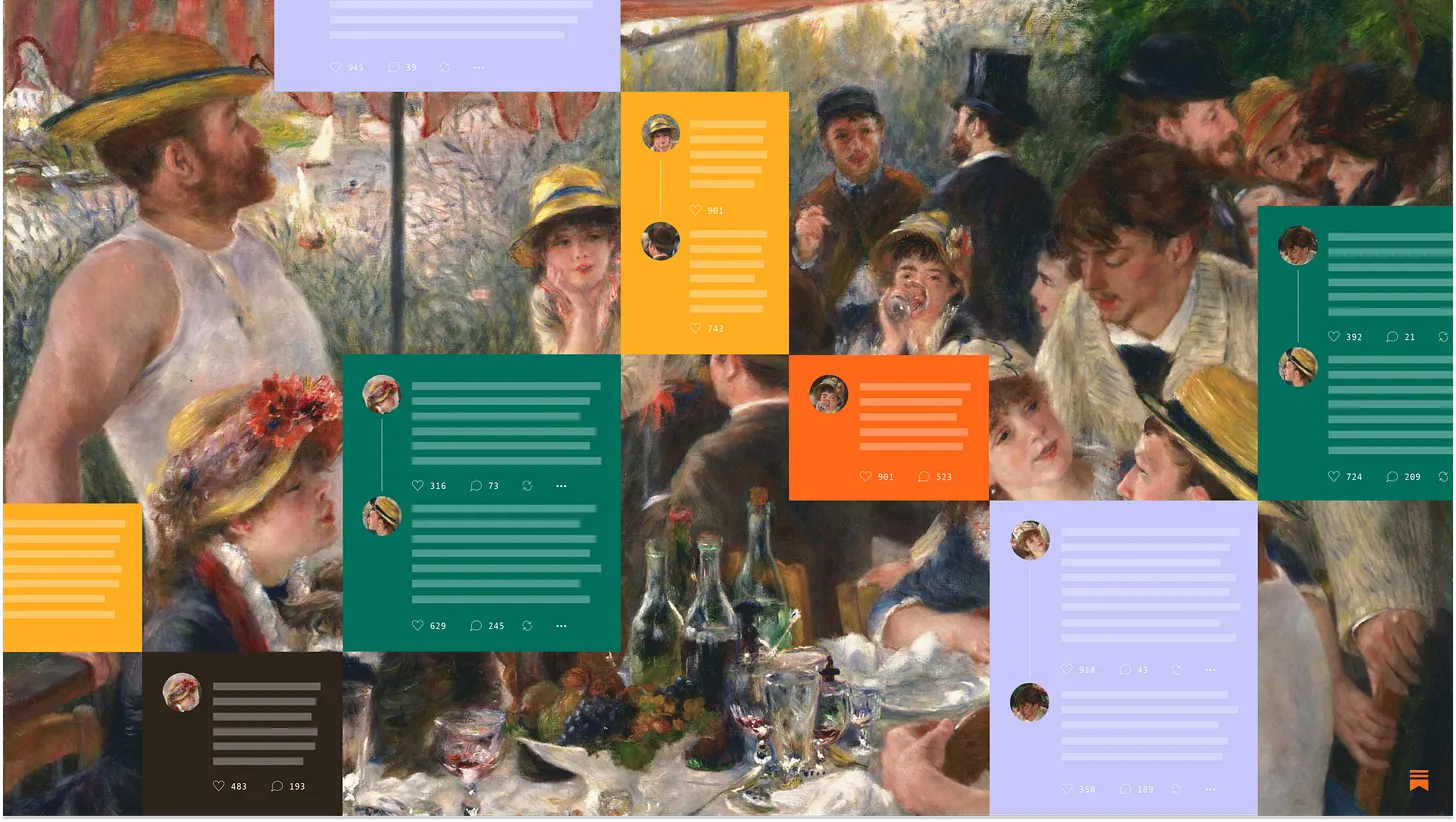Substack is social media. Yes, okay. It is.
Substack is an app you go to on your phone. Open it and you’ll be presented with a feed of short-form content and links to stories. You can dive into an article, leave a comment, or create a short post yourself. You can share a beautiful image. Publish a quick video. Write a haiku. People can “like” your notes. You can click on the Discover tab and explore what’s trending across the Substack network. You can look at people’s profiles. Send DMs. Join a chat. (Mute the people you don’t want to hear from.)
We started Substack in 2017 as a response to the ways social media was warping culture, so it might seem odd that we’ve somehow built… a social media app. But that doesn’t capture the whole story. Traditional social media apps are designed to lure us into an attention game that keeps us locked in an endless scroll. It can be fun, but it’s often maddening and divisive.
The reason it’s so difficult to extract ourselves from those places is that they serve an important purpose. They connect us to the world and events that shape our daily lives. They are where many creators and audiences find each other. So it’s not surprising that even many of social media’s loudest critics remain heavy users: it’s still possible to find brilliance, beauty, and wit there, even if it’s increasingly buried beneath a pile of preening, posturing, and pure crap.
So, in addition to strengthening the core promise of Substack, we’re building a new kind of social media—or maybe what social media should always have been. Here, you have a media ecosystem with a different set of rules that serve you. This is a place for real human relationships built around stories and culture. The feed is designed to lead you to deeper experiences. Meaningful connection—not shallow attention—is the fuel for the whole machine.
These conditions can make online media both stimulating and nourishing, prizing quality longform work while also facilitating discussion and discovery. They reward depth and trust. They ensure creators own their relationships with their audience and can make real money doing the work they believe in. They protect creative freedom, including freedom of expression itself.
This set of rules attracts the world’s best independent voices, who in turn bring the world’s smartest audiences. The resulting culture is different from what’s in the other places. On Substack, you can find a better quality of conversation and stumble upon great works. You can get closer to the writers and creators you love. You can feel part of something larger than yourself, and not just an avatar in some mad king’s social simulation.
You don’t need to think of Substack as social media to get value from it. Many people come to the platform simply to publish and receive posts, and that works just fine. But when Substack also functions as a network—as a place where people gather—it offers a cultural counterweight to the endless-scroll platforms.
The world doesn’t need another distraction app; it needs better civil infrastructure for online media built with society’s long-term wellbeing in mind. That doesn’t mean we can’t have fun online, but it does mean aiming higher than attention hacks. It means believing that social media’s status quo doesn’t have to be a forever condition.
That is the work we are applying ourselves to at Substack. We believe this better way will prevail—not through some tech geniuses figuring out how to perfectly gamify art and culture, but through building a network with a guiding mission to give more power to creators and more agency to consumers. Giving more power to you.
So, yes, Substack is social media, but it’s more than that, too. It’s a media system built with a different outcome in mind: not an endless scroll, but a culture worth participating in.
To learn more about what makes this place different, check out the below conversation between our CEO and CTO—
and
—about the “secrets of the Substack algorithm,” recorded at the end of 2024. In the discussion, the co-founders describe how we’re attempting to build a system that rewards depth and relationships over simple views and shallow engagement.
.png)






